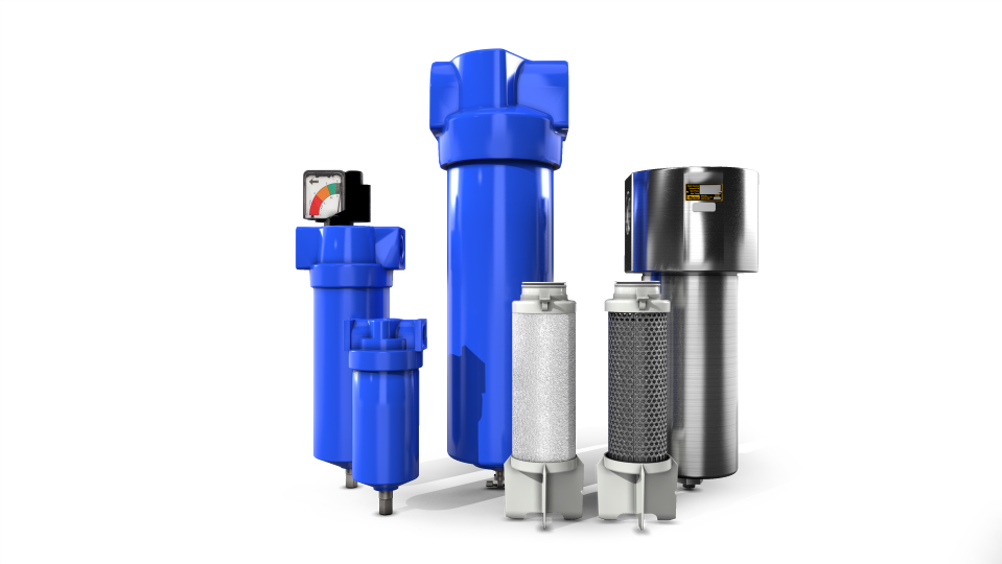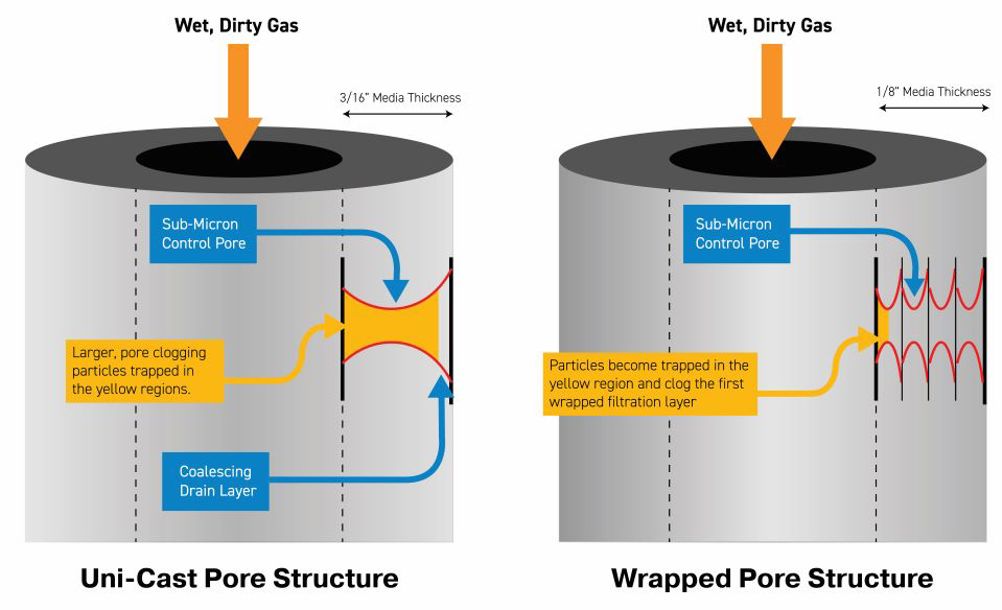F+S: Filtration is essential to compressed air and gas purity. Can you tell us how Parker Hannifin’s Industrial Gas Filtration and Generation Division serves this market?
MC: Our compressed air and gas filtration product portfolio serves the needs of any demanding process by protecting people, equipment, and product lifecycles. Parker’s proprietary filtration technology ensures clean air or gas regardless of the source. This means less equipment downtime, and a high rate of outputs for any task without worry of contamination.
F+S: How and where are your filters used?
MC: Parker’s compressed air and gas filtration products are used in a wide range of applications. Some key areas include industrial manufacturing, natural gas, alternative fuels, food and beverage, instrumentation, and life science.
Approximately 90% of all companies use compressed air for some aspect of their operations. Unlike other utilities, such as water and electricity, compressed air is not delivered by a utility supplier. Instead, it is typically generated on-site. Proper filtration used with compressed air or gas is typically meant to ensure that any contamination introduced from a compressor or the environment into the air stream does not damage expensive equipment and ruin the quality of a product.
Some examples of where these filters are used include after a compressor to prevent oil and water carryover downstream, between stages of natural gas compression to coalesce aerosols that bypass the compressor piston rings, and at the point-of-use in food contact applications where air or nitrogen touches the product – this prevents microbial contamination.

F+S: Could you talk us through your Finite filtration capabilities?
MC: There are several types of contaminants in a compressed air or gas system that must be removed for efficient operation. Liquid oil and water aerosols, atmospheric dirt, and pipescale are all examples of common contaminants that most systems will experience over time.
Coalescing filtration, particulate filtration, adsorption filtration, and water separation are all core Parker Finite capabilities that will appropriately provide the correct type of filtration depending on the contaminant.
- Coalescing filtration is used for removal of fine liquids and aerosols suspended in the air stream
- Particulate filtration will remove debris such as small solids and dirt
- Adsorption filtration is used to remove hydrocarbon vapor and also remove the smell or taste of compressor lube oil from breathing air
- Water separation is used for the reduction and elimination of excess liquids in air streams, and typically used in series before coalescing filtration
F+S: What differentiates Parker Finite filters and elements from the competition?
MC: Through years of research and development working with OEMs, Parker has become the leader for compressed air and gas filtration. The Parker Finite Uni-Cast filter elements are unique in the industry. The Uni-Cast formed micro-glass elements provide depth style filtration that traps and removes fine liquid aerosols. These elements maintain coalescing efficiency over a very wide range of flow. The unique Uni-Cast design provides a deeper, progressively efficient filtration media bed that allows for high efficiency and low differential pressure. When flow dynamics are subject to change, a general wrapped style filter element loses its filtration efficiency over a wide range of volumetric flow.

F+S: Why should a customer choose the Finite brand?
MC: With any Parker brand or product, customers have access to global support through our wide distribution network.
F+S: You are adding QR codes to many of your products. How will this help?
MC: Expanding the digital footprint of our products will help consumers quickly access relevant information and support for the filter they are using. Replacement element part numbers, contact support, and full product line information are currently available through QR codes that have been applied to our core products.
F+S: What major challenges are your customers currently facing?
MC: Typically, customers face challenges with equipment downtime due to the consequences of using contaminated compressed air or gas. The harsh reality is usually most people will not know the air or gas they are using is contaminated until issues start to arise.
F+S: How is Parker helping customers overcome those challenges?
MC: Compressed air and gas systems are not “one size fits all.” Parker works closely with customers to help determine the source of contamination, type of contaminates, and appropriately size and choose the correct type of filtration needed. Technical experts from Parker’s manufacturing facilities are available via phone or e-mail, as well as a trained sales team that can offer support in-person if needed.
F+S: Where is your R&D focused? What products are being developed?
MC: There has been focus recently on the emerging demands of hydrogen use. With a global effort to reduce the carbon footprint, products in development will support the production, conditioning, storage, and usage of hydrogen as an energy source. Specifically, filtration is required for hydrogen being used as an alternative fuel. The gas needs to be as clean as possible to ensure longevity and ideal performance for equipment using hydrogen fuel cell technology.
F+S: What are you doing about sustainability?
MC: We actively review our product lines to decrease manufacturing complexity. This ultimately allows revisions to the amount of material or components used in products, and reduces scrap during manufacturing.
F+S: What lies ahead for Parker’s Industrial Gas Filtration and Generation Division?
MC: We will continue to develop filtration solutions based on the needs and challenges of customers. With a global shift to green energy, we are strongly positioned as a global thought leader for purifying and protecting hydrogen applications.
This is a sponsored article on behalf of Parker’s Industrial Gas Filtration and Generation Division. To learn more, click here






